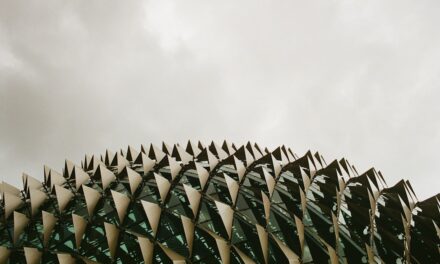Fra Bartolomeo, born Bartolomeo di Giovanni Battista, emerged from the vibrant cultural milieu of Florence in 1472. His early life was steeped in the artistic fervour that characterised the city during the Renaissance. Little is known about his childhood, but it is widely believed that he was the son of a wool merchant.
This background may have provided him with a certain level of financial stability, allowing him to pursue his artistic ambitions. As a young man, he was likely exposed to the works of prominent artists of the time, which would have significantly shaped his artistic sensibilities. At the age of 16, Bartolomeo began his formal training as an artist, initially apprenticed to the renowned painter Domenico Ghirlandaio.
Ghirlandaio was known for his detailed frescoes and ability to capture the human form with remarkable accuracy. Under his tutelage, Bartolomeo honed his skills in drawing and composition, laying a solid foundation for his future work. However, it was not long before he sought a deeper spiritual connection through art, leading him to join the Dominican Order in 1494.
This decision marked a pivotal moment in his life, as it not only influenced his artistic direction but also instilled in him a profound sense of religious devotion that would permeate his work.
Summary
- Fra Bartolomeo was born in 1472 in Florence, Italy, and entered the Dominican Order at the age of 14.
- He was heavily influenced by the works of Leonardo da Vinci and Michelangelo, and his style evolved from the influence of these great artists.
- Some of Fra Bartolomeo’s major works include “The Last Judgment” and “The Vision of St. Bernard”, which showcase his mastery of composition and use of light and shadow.
- His art often depicted religious and spiritual themes, reflecting his deep faith and devotion to the Dominican Order.
- Fra Bartolomeo collaborated with Raphael on several works, including the “Madonna and Child with Saints” and “The Vision of Ezekiel”, which further solidified his reputation as a master artist.
Artistic Influences and Style
Fra Bartolomeo’s artistic style is often characterised by its harmonious composition and a deep reverence for the human figure. Influenced by the early Renaissance masters, particularly Leonardo da Vinci and Michelangelo, he developed a unique approach that combined meticulous attention to detail with a strong sense of spirituality. His works often reflect a synthesis of the naturalism seen in Leonardo’s paintings and the monumental forms associated with Michelangelo.
This blend of influences allowed Bartolomeo to create art that was both visually striking and imbued with emotional depth. The use of colour in Fra Bartolomeo’s paintings is another hallmark of his style. He employed a rich palette that often included deep blues, warm earth tones, and vibrant reds, which served to enhance the emotional resonance of his subjects.
His compositions frequently feature figures arranged in pyramidal formations, a technique that not only draws the viewer’s eye but also conveys a sense of stability and balance. This method of structuring his works can be traced back to the teachings of the great masters who preceded him, yet Bartolomeo infused it with his own spiritual interpretation, creating a distinctive visual language that set him apart from his contemporaries.
Fra Bartolomeo’s Major Works
Among Fra Bartolomeo’s most celebrated works is “The Vision of St. Bernard,” painted around 1504. This piece exemplifies his ability to merge spiritual themes with masterful technique.
The painting depicts St. Bernard receiving a vision of the Virgin Mary and Christ, rendered with an ethereal quality that invites contemplation. The figures are portrayed with an almost sculptural presence, their expressions conveying a profound sense of reverence and awe.
This work not only showcases Bartolomeo’s skill in depicting human emotion but also reflects his deep commitment to religious themes. Another significant work is “The Holy Family with St. John the Baptist,” created circa 1505.
In this painting, Bartolomeo captures an intimate moment between the Holy Family and the young St. John, emphasising their familial bonds while also highlighting their divine nature. The composition is notable for its use of light and shadow, which adds depth and dimension to the figures.
The serene expressions on their faces evoke a sense of peace and harmony, inviting viewers to reflect on the sacredness of family and faith. Through these major works, Fra Bartolomeo established himself as a leading figure in Renaissance art, blending technical prowess with spiritual depth.
Religious and Spiritual Themes in Fra Bartolomeo’s Art
Religious themes are at the core of Fra Bartolomeo’s artistic oeuvre, reflecting his deep commitment to his faith and the ideals of the Dominican Order. His works often explore the relationship between humanity and the divine, inviting viewers to engage with profound spiritual questions. The artist’s ability to convey complex theological concepts through visual means is one of his most remarkable achievements.
For instance, in “The Last Judgment,” he presents a dramatic scene that encapsulates the tension between salvation and damnation, urging viewers to contemplate their own spiritual journeys. Bartolomeo’s exploration of spirituality extends beyond mere representation; it is deeply embedded in his artistic process. He believed that art should serve as a vehicle for divine expression, a means through which viewers could connect with higher truths.
This conviction is evident in his meticulous attention to detail and composition, as he sought to create works that were not only aesthetically pleasing but also spiritually uplifting. His paintings often feature saints and biblical figures rendered with an air of dignity and grace, reinforcing the idea that art can be a conduit for divine inspiration.
Fra Bartolomeo’s Collaboration with Raphael
Fra Bartolomeo’s artistic journey intersected with that of Raphael during a period when both artists were at the height of their creative powers. Their collaboration is particularly noteworthy as it highlights the exchange of ideas between two giants of the Renaissance. While there is limited documentation regarding their direct interactions, it is clear that they influenced one another’s work significantly.
Raphael admired Bartolomeo’s ability to infuse his figures with emotional depth and spiritual resonance, while Bartolomeo was inspired by Raphael’s mastery of composition and use of colour. One notable instance of their collaboration can be seen in the “Madonna della Sedia,” where elements reminiscent of Bartolomeo’s style are evident in Raphael’s depiction of the Virgin Mary and Child. The gentle curves and harmonious arrangement of figures reflect Bartolomeo’s influence on Raphael’s approach to composition.
This exchange not only enriched their individual practices but also contributed to the broader evolution of Renaissance art, as both artists sought to elevate their work through mutual inspiration.
Legacy and Impact on Renaissance Art
Fra Bartolomeo’s legacy is one that resonates through the annals of art history, particularly within the context of Renaissance painting. His unique blend of spirituality and technical mastery set a precedent for future generations of artists who sought to explore similar themes in their work. His influence can be seen in the works of later artists such as Correggio and Titian, who drew upon his innovative approaches to composition and colour.
Moreover, Fra Bartolomeo played a crucial role in shaping the narrative surrounding religious art during the Renaissance. His ability to convey complex theological ideas through visual means helped elevate the status of religious painting as a legitimate form of artistic expression. As art became increasingly intertwined with spirituality during this period, Bartolomeo’s contributions served as a bridge between medieval traditions and the emerging humanist ideals that characterised later Renaissance art.
Fra Bartolomeo’s Personal Life and Beliefs
Despite being a prominent figure in Renaissance art, much about Fra Bartolomeo’s personal life remains shrouded in mystery. His decision to join the Dominican Order reflects a deep commitment to his faith, which undoubtedly influenced both his life choices and artistic output. Living within a monastic community allowed him to immerse himself in spiritual contemplation while also providing him with a supportive environment for his artistic endeavours.
Bartolomeo’s beliefs were deeply rooted in the principles of humility and service, values that were central to Dominican teachings. He viewed art as a means to glorify God rather than merely a pursuit for personal fame or wealth. This perspective is evident in his choice of subjects; he often depicted saints and biblical narratives that conveyed moral lessons or spiritual truths.
His dedication to these ideals not only shaped his artistic practice but also left an indelible mark on those who encountered his work.
The Rediscovery of Fra Bartolomeo’s Art
In recent years, there has been a renewed interest in Fra Bartolomeo’s art as scholars and enthusiasts alike seek to uncover the nuances of his contributions to Renaissance painting. This rediscovery has been facilitated by advances in art historical research and conservation techniques that have allowed for more comprehensive examinations of his works. As previously overlooked pieces have come to light, art historians have begun to appreciate the depth and complexity inherent in Bartolomeo’s oeuvre.
Exhibitions dedicated to Fra Bartolomeo have emerged in various galleries across Europe, showcasing not only his major works but also lesser-known pieces that reveal different facets of his artistic vision. These exhibitions have provided opportunities for audiences to engage with his art on a deeper level, fostering discussions about its relevance in contemporary contexts. As interest continues to grow, it is clear that Fra Bartolomeo’s legacy will endure, inspiring future generations to explore the intersection of faith and creativity within their own artistic practices.
In conclusion, Fra Bartolomeo stands as a pivotal figure within Renaissance art history whose contributions continue to resonate today. His early life shaped by Florence’s artistic environment laid the groundwork for an extraordinary career marked by spiritual depth and technical mastery. Through his major works, collaboration with contemporaries like Raphael, and exploration of religious themes, he established himself as an artist whose influence transcends time.
As we rediscover his art today, we are reminded not only of his remarkable talent but also of the enduring power of art as a means of spiritual expression.
If you are interested in exploring different art techniques, you may also enjoy reading about layered colored pencil techniques for realistic blending. This article provides valuable tips on how to create stunning artwork using coloured pencils. It complements the in-depth guide to the artist Fra Bartolomeo by offering insights into a different medium and style of art. Whether you are a beginner or an experienced artist, experimenting with new techniques can help you expand your creative horizons.
FAQs
Who was Fra Bartolomeo?
Fra Bartolomeo, also known as Baccio della Porta, was an Italian Renaissance painter. He was born in 1472 in Florence, Italy, and was a contemporary of artists such as Leonardo da Vinci and Michelangelo.
What was Fra Bartolomeo known for?
Fra Bartolomeo was known for his religious paintings and frescoes, which often depicted scenes from the life of Christ and the Virgin Mary. He was also known for his use of perspective and his skill in creating lifelike figures.
What was Fra Bartolomeo’s artistic style?
Fra Bartolomeo’s artistic style was influenced by the teachings of the Dominican order, of which he was a member. His paintings often featured a sense of calm and serenity, and he was known for his use of soft, muted colours.
What are some of Fra Bartolomeo’s most famous works?
Some of Fra Bartolomeo’s most famous works include “The Vision of St. Bernard,” “The Holy Family,” and “The Last Judgment.” He also collaborated with the artist Mariotto Albertinelli on several works.
What was Fra Bartolomeo’s impact on the art world?
Fra Bartolomeo’s work had a significant impact on the art world of his time, and he was highly regarded by his contemporaries. His use of perspective and his skill in creating lifelike figures influenced many artists who came after him.
Where can I see Fra Bartolomeo’s artwork today?
Many of Fra Bartolomeo’s paintings can be found in museums and galleries around the world, including the Uffizi Gallery in Florence, the Louvre in Paris, and the National Gallery in London.



